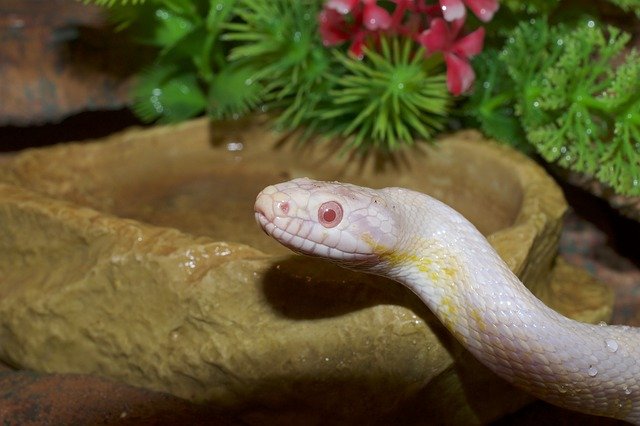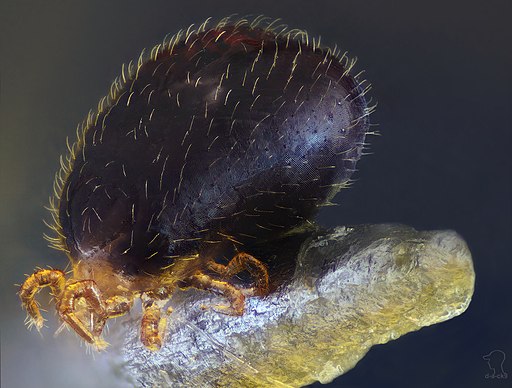My Snake Has Mites! Now What?
December 9, 2020

What Do Snake Mites Look Like?
Chances are if you have at least one reptile you’ve heard of mites. Mites are tiny black bugs that can be seen crawling around your snake. These parasites feed on the blood of snakes and lizards. Snake mites are usually found in groups around the eyes, nose, and vent. You may also see the small black dots on your hands or clothes after handling a snake with mites.

Snake Mite Symptoms
If your snake has become infested with mites, there are a few ways that you can tell beyond seeing the mites moving on your snake. Watching for these symptoms is important because some snakes, such as banana ball pythons, naturally have black specks in their pattern, making the mites harder to spot.
- Your snake is constantly soaking in their water dish
- There are specks floating in your snakes water (not to be confused with dirt from their substrate)
- When you run your hand down your snake, you feel raised scales
- Your snake may begin refusing food and have a loss of appetite
- Tiny black dots on your snake’s shed
- Tiny black dots gathered around the eyes, nose, and vent
- Your snake is rubbing against the glass and decor when not about to shed
How To Treat Snake Mites
Snake mites are difficult to treat because they are small and multiple quickly. Having mites on one snake is not the end of the world, but having mites on 10 snakes can be a nightmare. Has your dog or cat ever gotten fleas? It's essentially the same thing. Fleas aren’t the end of the world either, but they can be a pain to get rid of.
1. Treating Your Snake
Remove your snake from their enclosure and place them into a plastic tub. There are a few products that you can use such as Nix or Reptile Relief, however, there are snake mite home remedies that work just as well. Add a few drops of dawn dish soap into a gallon of warm water, and soak your snake for 30 minutes. Be sure to check the temperature of the water so your snake does not get cold. After 30 minutes you should see black dots floating in the water. I recommend dumping this water and repeating this process again to be sure your snake is mite free. Keep in mind, though, that dish soap can negatively affect your snake’s skin with repeated exposure, and this kind of bath is not something you should make a routine out of.
2. Empty Your Snake’s Enclosure
Before putting your snake back in its enclosure, take everything out of it. Take any plastic hides/decor and put them into the sink (or bathtub depending on the sizes). Fill with hot water and dawn dish soap. This will kill the mites on all of your snake's accessories.
3. Clean Your Snake’s Enclosure
The next step is to give your snake’s enclosure a really deep, thorough cleaning. Throw all substrate out, and fill the tank with hot water and dish soap. Let this sit for an hour, and then dump the water. Thoroughly rinse the tank out and dry before putting your snake or its accessories back in.
Where Do Snake Mites Come From?
Snakes get mites from other reptiles. You may have gotten a new reptile recently that came with mites, or perhaps you held a friend's reptile and transferred mites from theirs to yours. Another place snakes can get mites is the outdoors, where wild snakes are. If you allow your snake to slither in the grass you run the risk of them picking up mites.
Are Snake Mites Harmful To Humans And Other Animals?
Though snake mites rarely affect people and their furry companions, they can. They have been known to feed on humans and other mammals on occasion however they are not able to complete their life cycle when doing so, and therefore cannot live solely on mammals.
How To Prevent Snake Mites
Having an outbreak of snake mites is preventable. You can prevent an infestation of snake mites easily by always following these rules when interacting with your reptiles.
- Wash your hands in between handling reptiles
- Sanitize any tongs and other tools that you use with multiple reptiles after each use
- Always quarantine new reptiles
Questions about reptile quarantine? Check out my article on the proper way to quarantine reptiles here.




Sending...